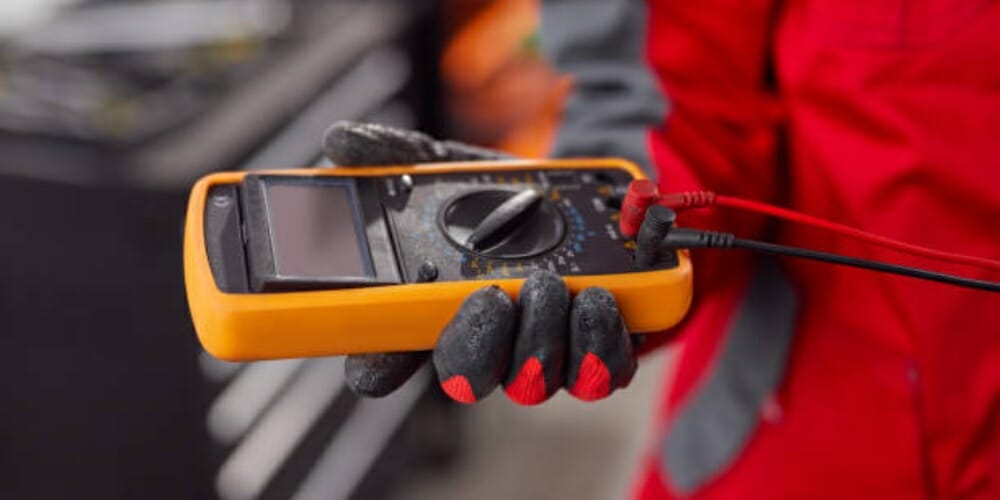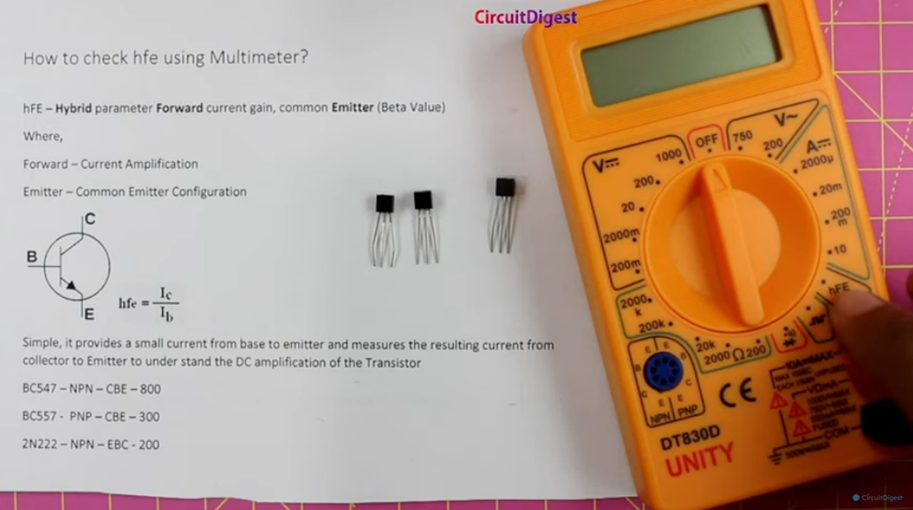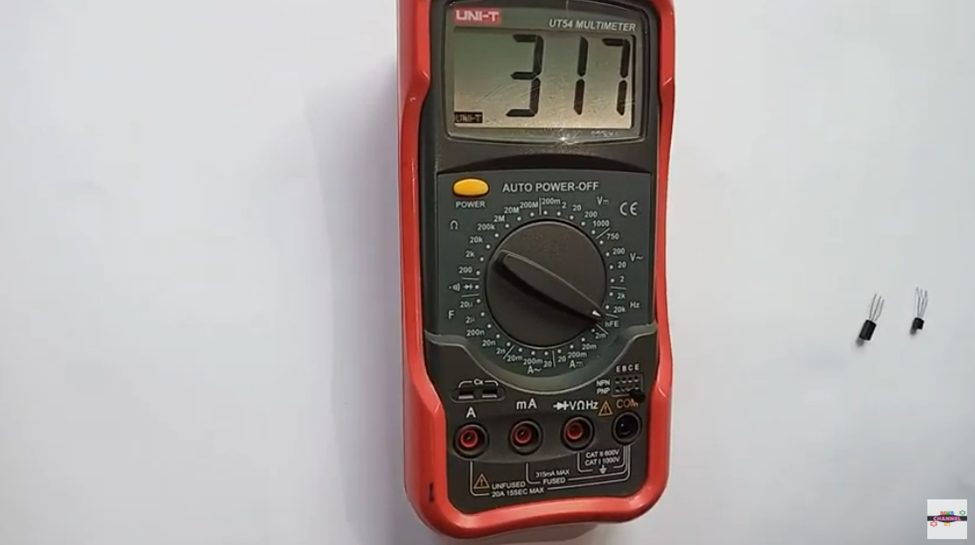What is hFE on a Multimeter

hFE is a unit of measurement for determining the amount of current gain (or amplification) that a transistor can produce. In other words, hFE is the ratio between an input current and the resulting output current, and it can be used to help determine how suitable a particular transistor might be for a circuit or application.
The hFE on a multimeter is a ratio that measures the voltage increase or decrease between two points in other words ‘the hFE value on a multimeter indicates how much current the transistor can handle before it starts to heat up and break down.’ For instance: when there is one volt of input current at point A and one amp of input current at point B, the output voltage will be one amp multiplied by one volt multiplied by the hFE. If the value of hFE is 10, then there will be ten amps of output current.

hFE – The Definition
hFE = Ic/Ib
To break down this equation, we can see that Ic is ‘collector current’ and Ib is ‘base current.’ When these two terms are divided together, we get the current gain of the transistor, which is commonly referred to as hFE.
What Does hFE Stand for?
hFE stands for “hybrid forward emitter.” It is also known as “forward beta” in some cases. The term comes from the fact that the ratio it represents is essentially a combination of two different measurements: specifically, the base current resistance and the emitter current resistance. The two are multiplied together to create what we know as hFE.
What is the hFE Test for?
The test measures the gain (or amplification factor) of a transistor. Gain is defined as the ratio of output signal over input signal. It is also frequently called “Beta” (β). A transistor acts as an amplifier by increasing the current or voltage at its output with respect to its input while at the same time maintaining a constant output impedance. To determine whether or not a transistor will function well in an application, it is necessary to check its gain and compare it with that required for that application. (1)

How is the hFE Calculated?
The hFE is calculated by comparing the base current and the collector current. These two currents are compared with the use of a transistor tester, which allows you to test the transistor in question. The transistor tester will hold the base current at a constant level and then measure the collector current that flows through it. Once you have both of these measurements, you can then calculate the hFE.
There are some important caveats to this method of testing your transistors, though. For example, you should be aware that if you’re measuring a group of transistors together, then they will interfere with each other’s readings. This means that if you want an accurate measurement of your transistors’ hFE values, then it’s best to test them one at a time. While this might slow down your testing process, it will also ensure that your results are accurate.
References
(1) Beta – https://economictimes.indiatimes.com/definition/beta
Video References
Circuit Digest
MHB Channel01
